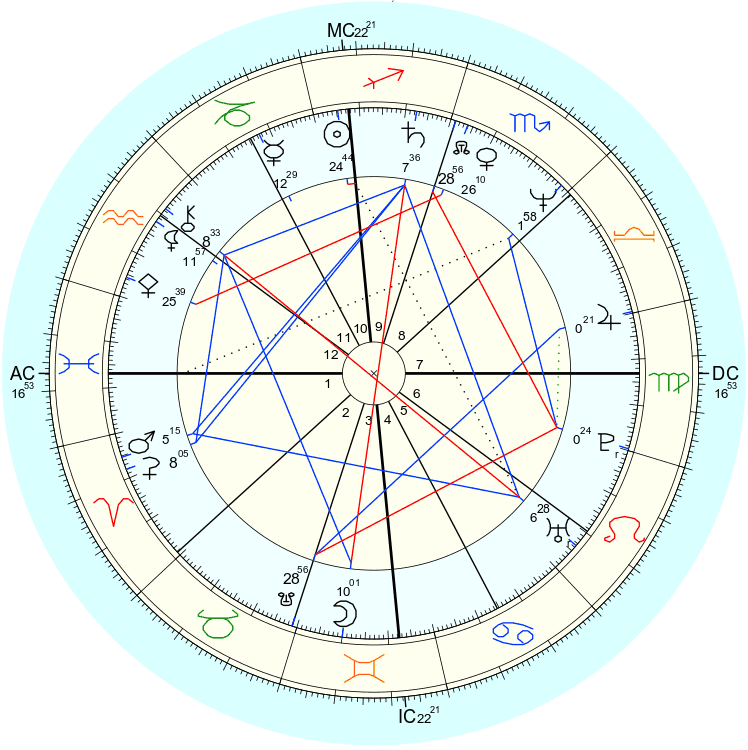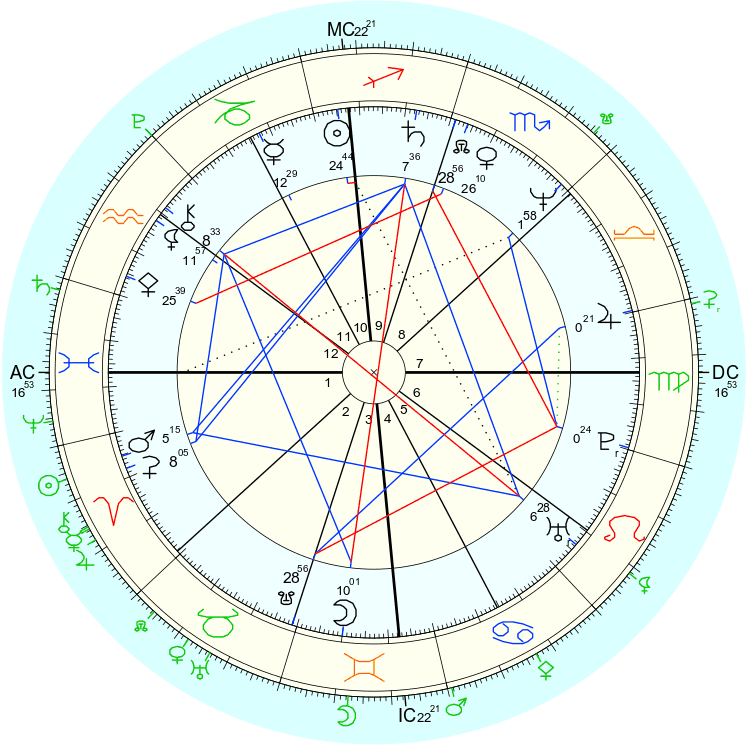Astrology is an ancient study that explores the connection between celestial objects and human life. It provides a window into understanding ourselves, our relationships, and the world around us. Various types of charts are used in astrology to interpret the positions of celestial bodies and their impact on our lives. In this article, we will delve into three primary chart types – natal, synastry, and transit charts – as well as briefly discuss additional chart types, to help you better understand their significance and uses.
Natal Chart
A natal chart, also known as a birth chart, is a snapshot of the sky at the exact moment of your birth. It captures the positions of the planets, the Sun, and the Moon, and places them within the 12 astrological houses. Natal charts are unique to each individual and serve as a cosmic blueprint that reveals your personality traits, strengths, weaknesses, and life purpose.
The natal chart is the foundation of astrology and is essential for understanding yourself on a deeper level. It is often the starting point for astrologers when working with clients, as it offers insights into various aspects of life, including career, relationships, and personal growth.

Synastry Chart

A synastry chart is a comparison of two natal charts to assess the compatibility and dynamics between two individuals. This chart highlights the interactions between the planets in each person's natal chart, providing insights into the strengths and challenges of their relationship. Synastry charts can be used to evaluate romantic, familial, or professional relationships, helping individuals understand the dynamics at play and offering guidance on how to navigate them.
Synastry charts are valuable tools for gaining a deeper understanding of the factors that bring people together and the underlying reasons for any conflicts or challenges. By examining these celestial interactions, couples or partners can work to enhance their connections and foster a stronger bond.
Transit Chart
Transit charts are dynamic astrological tools that track the ongoing movement of planets and other celestial bodies over time. These charts capture the current positions of the planets and compare them to the fixed positions in your natal chart. As the planets move through the zodiac, they form various aspects (angles) with the planets in your natal chart, which can signify events, opportunities, or challenges in your life. Transit charts are particularly helpful for understanding the planetary influences at play during specific periods in your life, such as job changes, new relationships, or major life transitions. They can also be used to help you make informed decisions or prepare for upcoming events. Many people consult transit charts to gain insights into the best timing for major decisions or when to initiate new projects.

Other Chart Types
While natal, synastry, and transit charts are the most commonly used charts in astrology, there are several other chart types that offer unique perspectives and insights. Here are brief descriptions of a few:
-
Solar Return Charts: These charts are created for the exact moment when the Sun returns to its position in your natal chart, typically on or near your birthday. Solar return charts provide insights into the themes and challenges that may arise during the upcoming year, allowing you to make the most of the opportunities and navigate potential obstacles.
-
Lunar Return Charts: Similar to solar return charts, lunar return charts are created for the moment when the Moon returns to its position in your natal chart, which occurs approximately every 28 days. These charts offer insights into the emotional landscape and personal themes for the upcoming lunar month, helping you understand the emotional undercurrents and how to work with them effectively.
-
Progressed Charts: Progressed charts are a predictive tool that reflects the symbolic growth and development of your natal chart over time. They are calculated by advancing your natal chart one day for each year of your life, providing a snapshot of how your personality and life circumstances evolve over time. Progressed charts are often used alongside transit charts to get a more comprehensive view of the astrological influences at play during different periods of your life.
-
Composite Charts: Composite charts are another tool for understanding relationships, created by calculating the midpoints between the planets in two individuals' natal charts. The composite chart represents the relationship itself, as opposed to the synastry chart, which focuses on the interactions between the individuals. Composite charts can reveal the dynamics, strengths, and challenges of a relationship, as well as its purpose and potential for growth.
-
Horary Charts: Horary charts are unique in that they are created in response to a specific question or concern. At the moment the question is asked, a chart is cast to provide insights into the matter at hand. Horary astrology is a highly specialized field that requires a deep understanding of astrological symbolism and the art of interpretation.
-
Electional Charts: Electional charts are used to determine the most auspicious time to undertake a specific activity, such as starting a business, getting married, or launching a new project. By analyzing the positions of the planets and other celestial bodies at different times, astrologers can identify the most favorable moments for success and favorable outcomes.
-
Draconic Charts: The Draconic chart is a lesser-known chart type that focuses on the North Node of the Moon, also known as the Dragon's Head. This chart is calculated by aligning the North Node with the first degree of Aries, emphasizing karmic and spiritual themes. Draconic charts can provide insights into an individual's soul purpose, past life experiences, and spiritual growth.
-
Relocation Charts: Relocation charts are derived from your natal chart but adjusted for a different geographic location. These charts can help you understand how your astrological influences might shift if you were to move to a new city or country. Relocation charts can be useful for those considering a move, as they offer insights into potential opportunities or challenges that may arise in the new location, such as career prospects, relationships, and personal growth.
Astrology offers a rich and complex language for understanding ourselves, our relationships, and the world around us. With various chart types – including natal, synastry, transit, and many others – astrology provides an array of tools to gain insights into our personalities, life events, and the dynamics of our relationships. As we explore these different chart types, we can deepen our self-awareness, enhance our connections with others, and better navigate the ever-changing tides of life. By embracing the cosmic wisdom offered by astrology, we can tap into a wealth of knowledge that empowers us to live more authentic, fulfilling, and purposeful lives.
